|
Size: 3306
Comment:
|
Size: 4226
Comment:
|
| Deletions are marked like this. | Additions are marked like this. |
| Line 7: | Line 7: |
| '''12-13 November 2013''': cooling down, HWP Modulator installation at the pupil (120mm from the entrance lens of the cryostat) | '''12-13 November 2013''': cryostat and Read-Out positioning in the cabin, cooling down, HWP Modulator installation at the pupil (120mm from the entrance lens of the cryostat). |
| Line 9: | Line 9: |
| '''14 November 2013''': OTF geometries on Mars and Uranus. Check of the focal plane geometry. First light of NIKA prototype with polarisation facilities. | '''14 November 2013''': OTF geometries on Mars and Uranus. Check of the focal plane geometry. First light of NIKA prototype with polarisation facilities. In the afternoon tests on the power on the pixels check its uniformity on the 2 arrays. |
| Line 18: | Line 18: |
| '''Arrays status''': 128 pixels 2mm - <1Hz/sqrtHz noise; 201 pixels 1mm about 10Hz/sqrtHz noise | '''Arrays''': 130 (129 good) pixels 2mm - about 1Hz/sqrtHz noise (sky with tau about 0); 201 (about 185 good) pixels 1mm - about 5Hz/sqrtHz noise (sky with tau about 0); The tests for the optimal power where conducted with the window closed with some alu foil -> not great in term of stability, could add some 1/f. Touching the foil made a clear signal (at least on the 1mm). The final values for the different DAC gains can be seen in this image: |
| Line 20: | Line 24: |
| '''Modulation frequency''': 8kHz 1mm, 4kHz 2mm | {{attachment:DACgains.png||width=800}} ''Figures: Settings of the 2 arrays. In red, NIKEL1 = 1mm, in blue NIKEL2 = 2mm.'' '''Modulation frequency''': 8kHz 1mm, 5kHz 2mm |
| Line 26: | Line 34: |
| Opacity is measurd with the taumeter at 225 GHz | Opacity is measured with the taumeter at 225 GHz |
| Line 47: | Line 55: |
| || 241-245 || 23h34-23h47 || other observing || various || || || || || HWP+Pol+Cryostat in the cabin environment || | || 241-245 || 23h34-23h47 || others observing || various || || || || || HWP+Pol+Cryostat in the cabin environment || |
| Line 58: | Line 66: |
| {{attachment:1mm.png||width=500,height=250}} | {{attachment:1mm.png||width=900,height=550}} |
| Line 60: | Line 68: |
| ''Figures: 1mm array.'' | ''Figures: 1mm array from scan 231.'' |
| Line 62: | Line 70: |
| {{attachment:2mm.png||width=500,height=250}} | {{attachment:2mm.png||width=900,height=550}} |
| Line 64: | Line 72: |
| ''Figures: 2mm array.'' | ''Figures: 2mm array from scan 231.'' {{attachment:pol1.png||width=600}} {{attachment:pol2.png||width=600}} ''Figures: Entire (top) and zoomed (bottom) Timeline of the scan 232 on Uranus in configuration NIKA + HWP-Pol'' '''Further results on polarisation measurements will come soon.......''' |
November 11th 2013, Alain Benoit, Martino Calvo and Andrea Catalano come to the 30m to install, cool down and testing the NIKA prototype.
12-13 November 2013: cryostat and Read-Out positioning in the cabin, cooling down, HWP Modulator installation at the pupil (120mm from the entrance lens of the cryostat).
14 November 2013: OTF geometries on Mars and Uranus. Check of the focal plane geometry. First light of NIKA prototype with polarisation facilities. In the afternoon tests on the power on the pixels check its uniformity on the 2 arrays.
15 November 2013: Cryostat back to 300K: 3He-4He mix recovery, heating trap. Polarisation facilities dismantling. Back to Granada.
STATUS
Cryostat Temperature: 150mK (set by temperature control).
Arrays: 130 (129 good) pixels 2mm - about 1Hz/sqrtHz noise (sky with tau about 0); 201 (about 185 good) pixels 1mm - about 5Hz/sqrtHz noise (sky with tau about 0); The tests for the optimal power where conducted with the window closed with some alu foil -> not great in term of stability, could add some 1/f. Touching the foil made a clear signal (at least on the 1mm). The final values for the different DAC gains can be seen in this image:
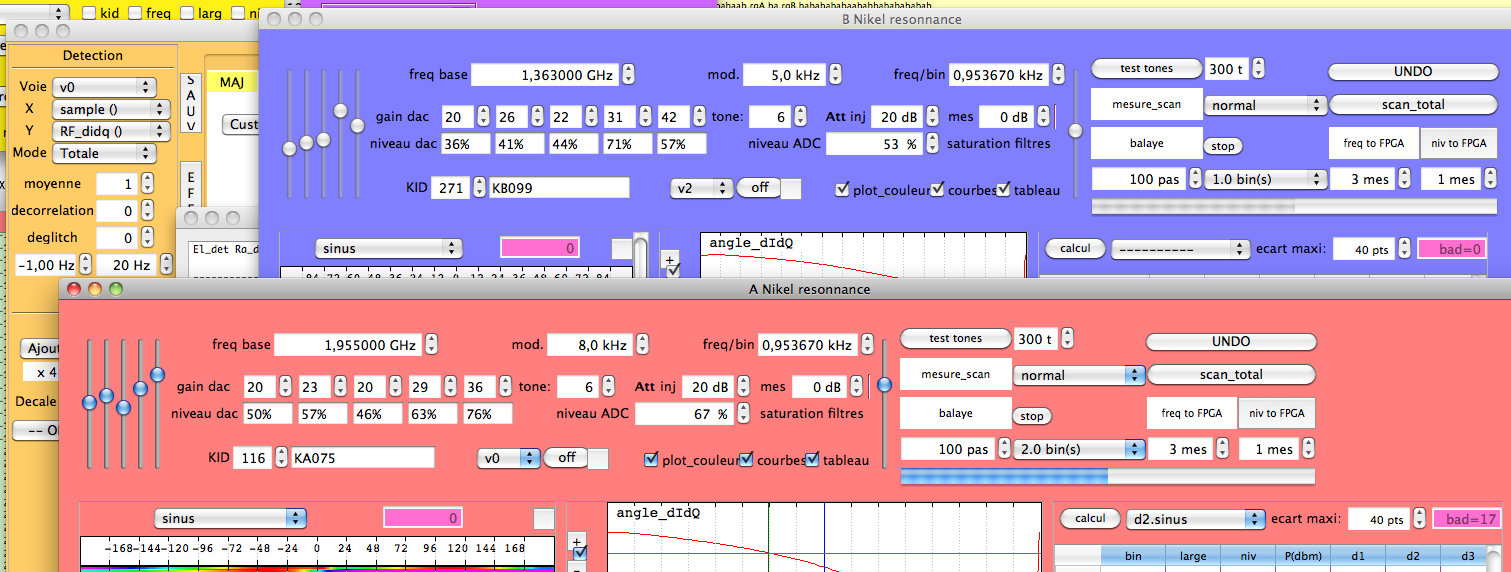
Figures: Settings of the 2 arrays. In red, NIKEL1 = 1mm, in blue NIKEL2 = 2mm.
Modulation frequency: 8kHz 1mm, 5kHz 2mm
OBSERVATIONS Log
Opacity is measured with the taumeter at 225 GHz
p2cor : 0
p7cor : 0
initial Focus : -2.40 mm
Scan |
UT |
Source |
Command |
Az |
El |
Pointing X, Y, Focus |
Tau225 |
Comment |
15 |
04h39 |
Mars |
Track |
|
|
0 , 0 , -2.4 |
0.15 |
|
16 |
04h45 |
Mars |
OTF_Geometry |
|
|
0 , 0 , -2.4 |
0.15 |
First map for choosing the reference pixels |
17-21 |
04h58-05h04 |
Mars |
Focus_Liss |
|
|
0, 0, -2.4 |
0.15 |
|
22 |
05h05 |
Mars |
Focus |
|
|
0, 0, -2.4 |
0.15 |
|
23 |
05h47 |
Mars |
OTF_Geometry |
|
|
0, 0, -2.4 |
0.15 |
Tuning working during the map |
211-218 |
21h34-21h57 |
Uranus |
Track 300 300 |
55 |
190 |
0, 0, -2.4 |
0.00001 |
|
220-224 |
22h01-22h08 |
Uranus |
Focus_Liss |
|
|
0, 0, -2.4 |
0.00001 |
optimal focus probably over the range |
225 |
22h10 |
Uranus |
Cross |
|
|
0, 0, -2.4 |
0.00001 |
|
226-230 |
22h12-22h18 |
Uranus |
Focus_Liss |
|
|
0, 0, -1 |
0.00001 |
set pointing Az=-12.8 El=3.8 set focus = -1.5 |
231 |
22h24 |
Uranus |
OTF_Geometry |
|
|
-12.8, 3.8, -1.5 |
0.00001 |
|
232 |
22h49 |
Uranus |
OTF_Geometry |
|
|
-12.8, 3.8, -1.5 |
0.00001 |
HWP+Pol |
241-245 |
23h34-23h47 |
others observing |
various |
|
|
|
|
HWP+Pol+Cryostat in the cabin environment |
FIRST RESULTS
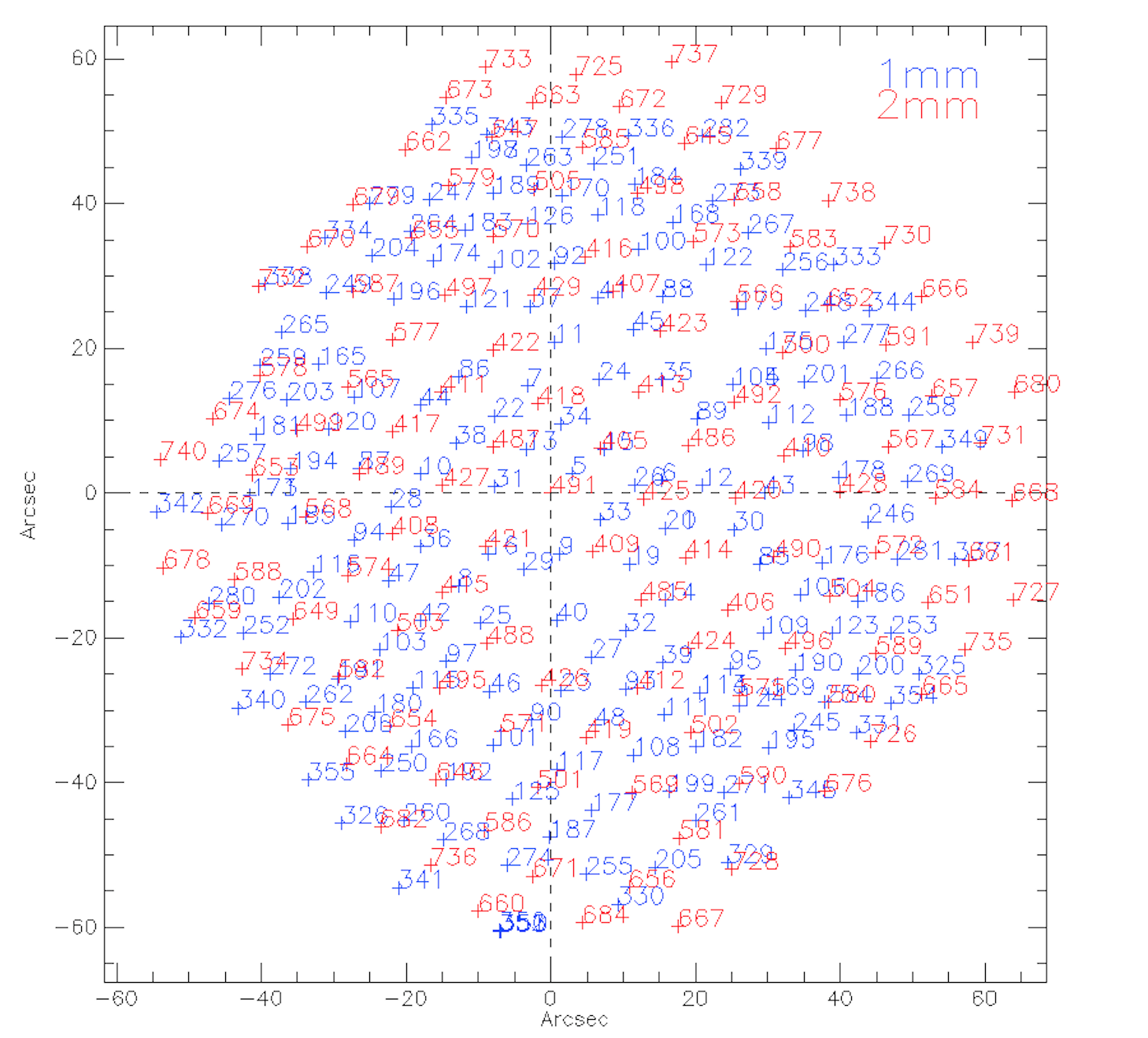
Figures: Focal Plane Geometry derived using scan 16: we chose the following reference pixels: 491 for 2mm array, 5 for 1mm array.

Figures: 1mm array from scan 231.
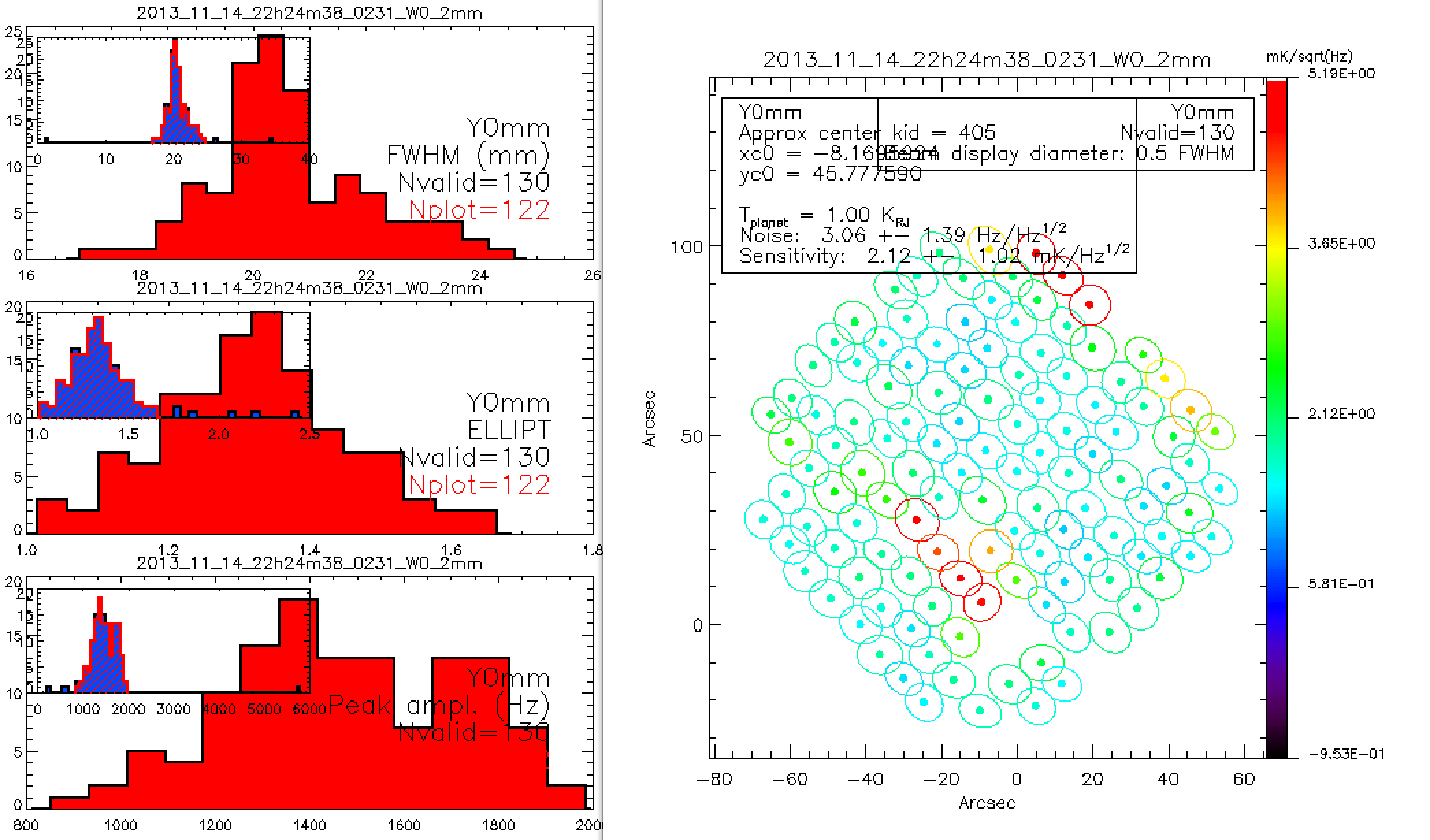
Figures: 2mm array from scan 231.
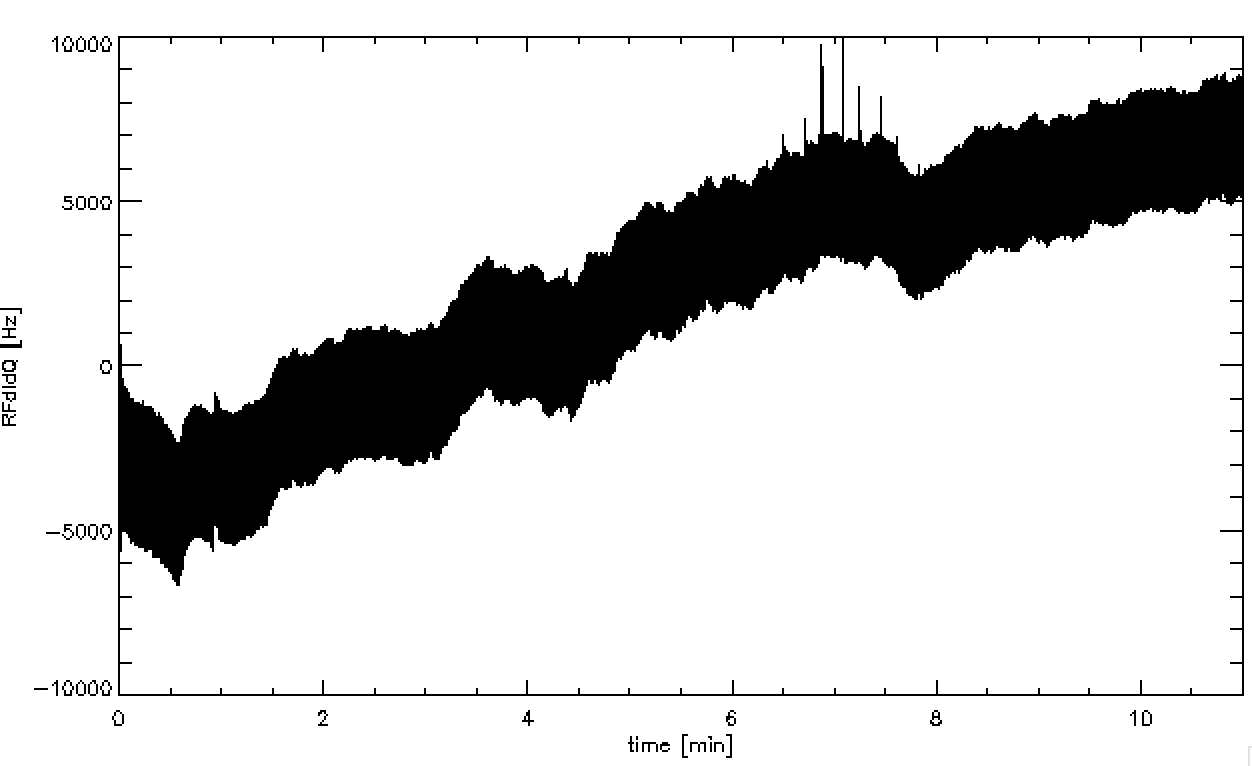
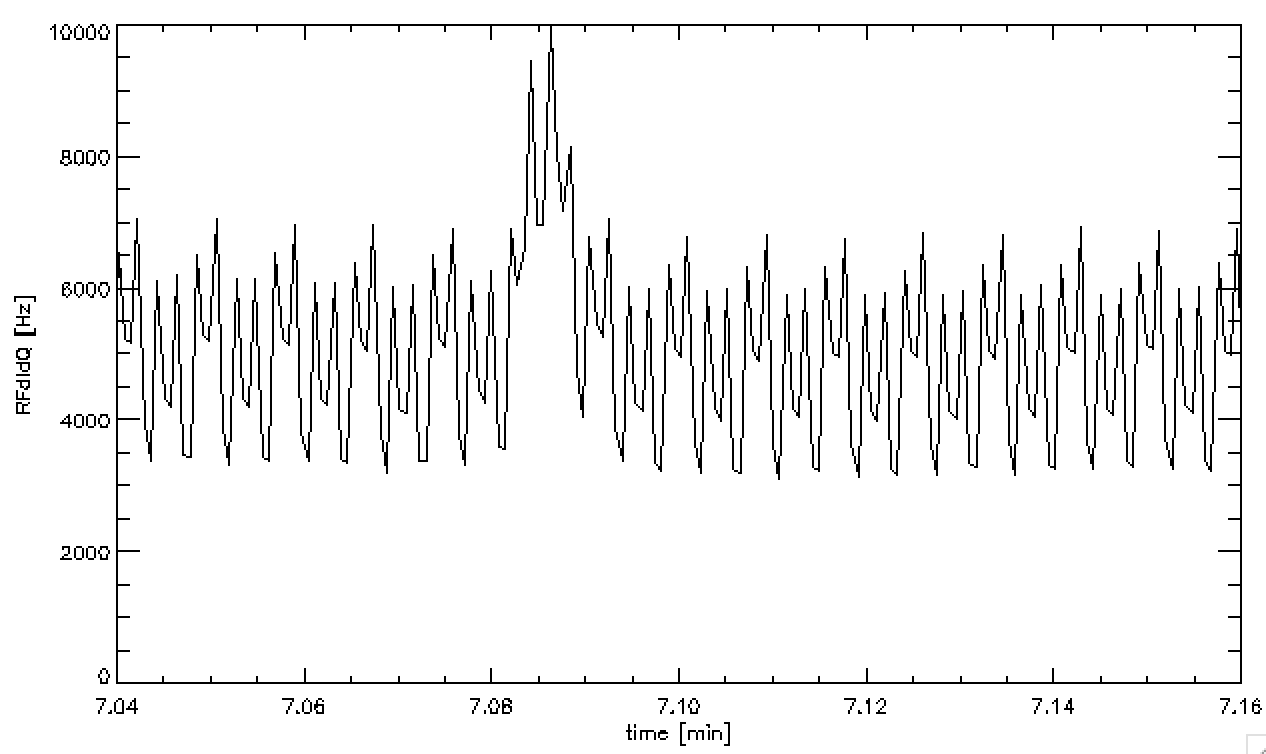
Figures: Entire (top) and zoomed (bottom) Timeline of the scan 232 on Uranus in configuration NIKA + HWP-Pol
Further results on polarisation measurements will come soon.......
